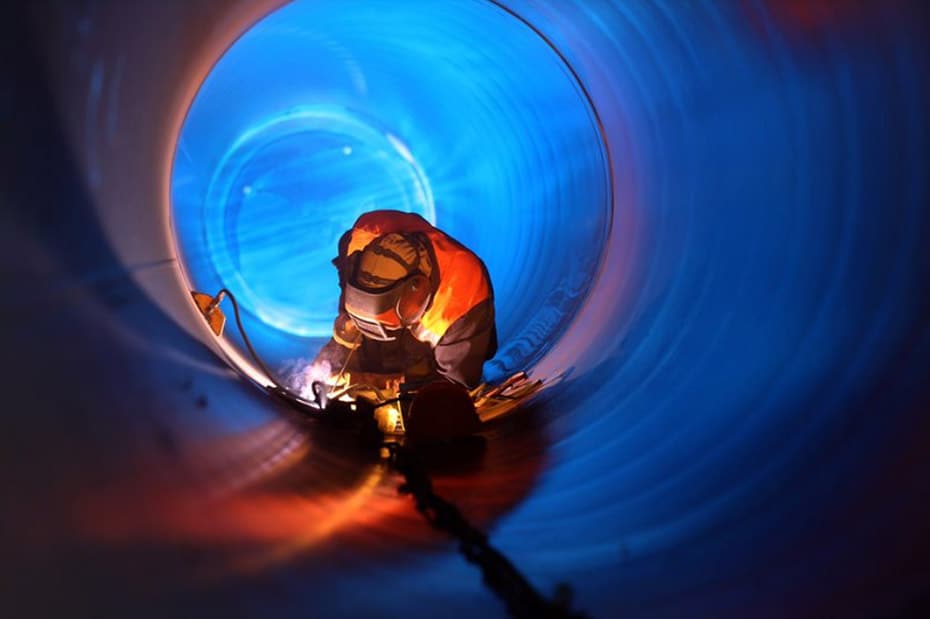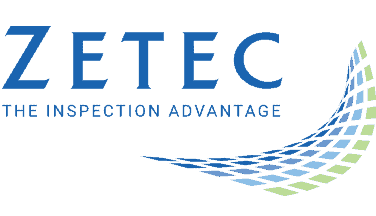How Ultrasonic Testing of Forging Ensures Heavy Manufacturing Product Quality

Forgings in the form of turbine discs, rotors, blades, and dovetails undergo heavy stress that can impede machine functionality. That’s why nondestructive testing (NDT) analysts need a precise method to detect flaws early. The key to forging inspections is ultrasonic testing (UT), which provides additional customization schemes and pinpoints flaws in greater depth.
But ultrasonic testing of forging isn’t complete unless technicians implement specialized UT procedures, such as corrosion scanning or phased array ultrasonic testing (PAUT). Both methods can conform to the complex contours of forgings and scan subsurface layers on a volumetric level.
Corrosive Scanning Methods for Ultrasonic Testing of Forging
One of the most productive UT products on the market is a paintbrush scanner, which provides a flexible system where other options fail. If talking about a large rotor shaft, for example, a typical X-Y scanner may have a tough time adapting to the curvature of the welding since the limited viewing schematic fails to foster an accurate rendition of the testing radius. Therefore, an analyst may be forced to adjust the scanner incessantly, potentially obtaining skewed results. A wheel probe scanner is another alternative for forging testing campaigns, but it lacks the ability to encode the second axis, which causes misalignments and inaccurate data.
However, the paintbrush scanner conforms to flat and curved surfaces with ease, ensuring that 100% of the testing radius is covered. A paintbrush scanner offers the following benefits:
- Two encoded wheels that track the scanner position in real-time, ensuring accurate coverage.
- Agile scanning abilities with no need for realignments.
- A software imaging system that pinpoints flaws in high resolution.
The encoded wheels of the scanner are magnetic and stick to metal forgings. Moreover, a paintbrush scanner can confidently tout virtually 100% area coverage when assessing pitting, corrosion, and erosion.
The Benefits of PAUT
Precarious indications in the form of parallel cracking may form within metal forgings, which are harder to read using other NDT techniques. Conventional UT, for example, only provides fixed beaming positions that fail to detect parallel cracking and other awkward flaws. Therefore, a technician could miss underlying aberrations within forgings, which could compromise the integrity of the welding material.
PAUT, on the other hand, provides additional flexibility that standard UT probing cannot match. With the help of PAUT, an analyst can achieve:
- Multiple beam angles from a single probe.
- Wave beam customizations to capture more flaws in less time.
- The replacement of raster motion with linear scanning, ensuring a more complete scan.
With the multiple apertures and enhanced focusing depths, users have a simplified scanning process. Moreover, PAUT capacity can support low-frequency 2D matrix array probing, which adapts to forgings that are made from austenitic welds with high grain content. The high grain levels within austenitic wells can cause grain reflections that distort the beams, masking defects and producing incomplete data. The low-frequency of 2D matrix arrays can combat propagation issues caused by high attenuation.
The Right Form of Instrumentation for Ultrasonic Testing
When choosing a UT instrument, choose one that provides both PAUT and 2D matrix array support without the need for any external software. A UT instrument that fails to provide these valuable capabilities can place analysts at a disadvantage, as they could lack the ability to efficiently find additional deviations in a single testing session. Further, the right type of UT instrument can also accept a paintbrush scanner brush. A family of instruments that can support corrosion scanning, PAUT, and 2D matrix array leaves the user with plenty of options.
A high performance UT instrument should also have enhanced bipolar pulsers that can penetrate thick forging sections, allowing technicians to probe deeper beneath the surface. Helpful additions include full matrix capture technology that provides clean renderings of highlighted flaws and a total focus method of up to one million data points per frame. More importantly, the instrument should include powerful software that buffers PAUT signals and affords analysts efficient online and offline data analysis.
The Ultrasonic Testing of Forging Done with UT
While ultrasonic testing of forging is the preferred method, technicians must use specialized UT strategies in the form of corrosion scanning and PAUT to outline defects with greater clarity. A corrosion scanner can adapt to unconventional surfaces and shapes, leading to a productive testing session that produces comprehensive data. Plus, PAUT provides wave beam accommodations that eliminate cumbersome setup procedures and inflexible scanning positions.
But UT campaigns cannot be fully realized without profound UT instruments that provide PAUT, corrosion scanning, and built-in 2D matrix array support features. Moreover, software is instrumental in maximizing the probing functionality and providing seamless data without the hassle of manual interpretations. When you use the right equipment, a single instrument with the properl probes and acessories can be enough to assist in some of the most difficult flaw-finding missions, giving maintenance crews the ability to address indications early and preserve welding integrity.
Zetec is a major provider of corrosion scanners and PAUT instrumentation for many types of forging. Contact us today to learn which UT method is best for your NDT endeavors and to receive a custom inspection plan.





